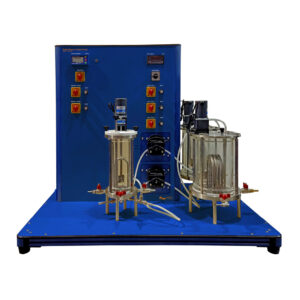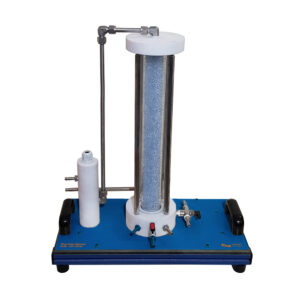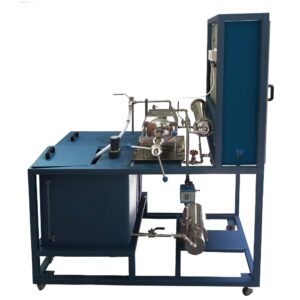Liquid/Solid Mixing is a unit operation with the goal of causing erratic movements in a fluid by the use of mechanical devices. Agitation and mixing are frequently confused, although they are not the same thing. Agitation is the term used to describe the movement created in a substance in a particular manner, typically with a circulatory model inside some type of container, while a mixture is a random distribution of two or more phases that were initially divided. It is impossible to mix a single substance, such as water in a tank. The Unit experimental stand is an in dependent unit used to illustrate the mixing processes during agitation. Different experiments relating to mixing are performed in a tank with agitators. The agitator is driven by a regulated electric motor with adjustable speed. In the tank, a pipe coil can be fitted as a heat exchanger.
Experiments
- Visualization of fluid fields.
- Emulsion of immiscible liquids.
- Mixing of miscible liquids.
- Heating process of liquid mass.
- Test with models at scale.
- Quality of mixing / mixing time.
- Power required in the agitation process.
- Suspensions of solids in liquids.
- Formation of solid-liquid solutions.
- Power and speed of the different agitators.




